25% Discount for Any Product or Service!
Generative AI and Visual Communication
Generative AI and visual communication technologies, including text-to-image models like DALL-E, Midjourney, and Stable Diffusion, have fundamentally altered how designers conceptualize, iterate, and produce visual content. These tools enable rapid prototyping of ideas, allowing designers to explore countless visual possibilities within minutes rather than hours or days. The traditional design process, which once required extensive manual creation of mood boards, sketches, and iterations, can now be accelerated through AI-generated concepts that serve as starting points for further refinement. This technological evolution has democratized certain aspects of visual creation, enabling individuals without extensive technical training to produce sophisticated imagery, while simultaneously challenging designers to redefine their roles as creative directors, concept developers, and strategic visual thinkers rather than solely executors of visual elements.
This transformation extends far beyond mere efficiency gains and encompasses a fundamental reimagining of the creative workflow and the nature of visual authorship itself. AI-powered design tools are increasingly capable of analyzing vast datasets of visual information to identify patterns, predict aesthetic preferences, and generate personalized content at scale. This capability has profound implications for brand consistency, user experience design, and mass customization of visual communications. Designers must now navigate complex questions around creative ownership, authenticity, and the human element in visual storytelling while developing new competencies in prompt engineering, AI tool curation, and human-AI collaboration. The most successful visual communication designers of this era are those who embrace AI as a collaborative partner rather than viewing it as a replacement, leveraging machine capabilities for ideation and production while maintaining human insight for strategy, emotional resonance, and cultural sensitivity that AI cannot replicate. This symbiotic relationship between human creativity and artificial intelligence is reshaping not only what visual communication design can achieve but also how it functions as a bridge between technology and human experience.
The intersection of generative artificial intelligence and visual communication represents one of the most transformative developments in creative industries today. As AI technologies rapidly advance, they are fundamentally reshaping how designers, marketers, and visual communicators approach their craft, offering unprecedented capabilities for content creation, ideation, and production workflows. From generating initial concept sketches to producing finished marketing materials, generative AI tools are becoming integral to the creative process, challenging traditional notions of authorship while opening new possibilities for visual storytelling and brand communication.
This technological revolution raises critical questions about the future of visual design practice and education. While some view AI as a threat to creative professions, a more nuanced perspective reveals its potential as a powerful collaborative tool that can enhance human creativity rather than replace it.
Looking forward, the most successful visual communicators will be those who can seamlessly blend human creativity, strategic thinking, and emotional intelligence with AI's computational power and generative capabilities. This synthesis requires ongoing education, experimentation, and a commitment to ethical practice that prioritizes human values and meaningful communication over mere technological novelty. As the field continues to evolve, the fundamental goal remains unchanged: to create visual communications that inform, inspire, and connect with audiences in meaningful ways, now enhanced by the remarkable possibilities that generative AI brings to the creative process.


Understanding how to effectively integrate generative AI into visual communication workflows—while maintaining design integrity, ethical standards, and meaningful human insight—has become essential for contemporary practitioners. The key lies not in whether to adopt these technologies, but in how to use them thoughtfully to amplify creative vision and solve communication challenges more effectively.
In an era where information overload threatens to overwhelm audiences across every medium, the role of visual communication design has never been more critical. As digital landscapes evolve at breakneck speed and attention spans continue to fragment, designers face the dual challenge of cutting through visual noise while creating meaningful connections between brands, ideas, and their intended audiences. The integration of artificial intelligence into visual communication design represents one of the most profound shifts in the creative industry since the advent of digital tools.
AI: Revolutionizing Visual Communication Design
The integration of AI into visual communication represents more than a technological upgrade—it signifies a paradigm shift that empowers designers to push creative boundaries while maintaining efficiency and relevance. As these tools continue to evolve, they promise to democratize design capabilities, enabling both professionals and non-designers to create compelling visual content. However, the true power of AI in design lies not in replacing human creativity but in amplifying it, allowing designers to focus on strategic thinking and innovative concepts while AI handles the technical execution. The future of visual communication will likely be defined by this symbiotic relationship between human imagination and artificial intelligence, creating possibilities we are only beginning to explore.
Generative AI: Tools like Midjourney and DALL-E allow users to generate images from text prompts, automating the visual creation process and offering new avenues for artistic expression.
Automated Tasks: AI can handle repetitive tasks like image analysis, captioning, background removal, and color correction, freeing up designers for more creative work.
Enhanced Efficiency: By automating these tasks, AI significantly accelerates the design process, allowing for faster iteration and the creation of more visuals.
Personalization and Targeted Communication:
AI-Powered Analytics:
AI can analyze user behavior and preferences to understand how audiences interact with visuals.
Personalized Recommendations:
Based on this analysis, AI can recommend or generate visuals tailored to specific audiences, enhancing engagement and impact.
Data-Driven Design:
AI algorithms can identify trends and patterns in vast datasets, informing design decisions and ensuring visuals resonate with the target audience.
New Forms of Visual Expression:
AI-Generated Art:
AI is enabling new forms of visual art, pushing the boundaries of creativity and allowing for unique and innovative visual experiences.
Interactive Visuals:
AI-powered tools can create interactive visuals that respond to user input, offering dynamic and engaging experiences.
Real-time Adjustments:
AI can analyze and adjust visuals in real-time based on audience feedback, ensuring optimal engagement and impact.
Ethical Considerations:
Bias in AI: It's crucial to be aware of potential biases in AI algorithms and ensure that visuals are created and used ethically.
Human Oversight: While AI can automate many tasks, human oversight is still essential to ensure the quality, accuracy, and ethical implications of visual communication.
Authenticity: As AI-generated visuals become more sophisticated, it's important to consider the role of human creativity and authenticity in visual communication.
AI is revolutionizing visual communication by streamlining the creative process, enabling personalized and targeted content, and fostering new forms of visual expression. While AI offers tremendous potential, it's essential to address the ethical considerations and ensure that AI is used responsibly and creatively in visual communication. The future of visual communication will likely be defined by this symbiotic relationship between human imagination and artificial intelligence, creating possibilities we are only beginning to explore.
AI is rapidly transforming visual communication, enhancing both the creative process and the impact of visual content. AI tools are automating tasks like image editing, generating visuals from text, and analyzing audience engagement, allowing creatives to focus on higher-level concepts and storytelling. This shift is leading to more efficient, personalized, and impactful visual communication strategies. The following is a more detailed look at how AI is impacting visual communication. The landscape of visual communication is undergoing a profound transformation as artificial intelligence reshapes the fundamental processes of design creation and consumption. From the initial spark of creative inspiration to the final delivery of polished visual content, AI technologies are revolutionizing every aspect of the design workflow. This technological evolution extends far beyond simple automation, fundamentally altering how designers approach color selection, composition, and layout design while opening new possibilities for creative expression and efficiency.

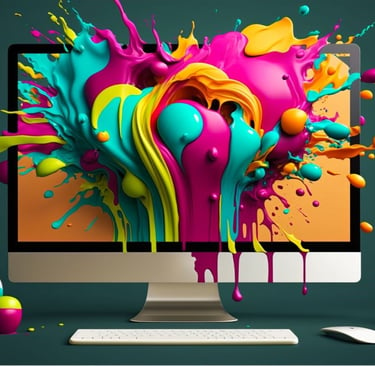
AI: A Collaborative Partner
AI is changing how visual communication is created and consumed, impacting everything from color selection to layout design.
AI tools are automating repetitive tasks, generating design suggestions, and speeding up the creative process.
They can analyze trends, user preferences, and cultural shifts to help create relevant and appealing work.
Generative AI can create unique patterns, textures, images, illustrations, and even entire designs based on textual descriptions or specific inputs.
AI can also enhance image quality, retouch and enhance images, improve resolution, correct imperfections, and even recreate missing parts of an image.
AI plays a role in enhancing the user experience by enabling personalized designs and adaptive layouts.
AI-powered tools can also improve collaboration and communication among design teams by facilitating real-time feedback and streamlined workflows.
AI Tools for Visual Communication Design: A wide range of AI tools are available, both as standalone applications and integrated into existing design software:
Generative AI tools: DALL-E, Midjourney, Adobe Firefly, and Stable Diffusion can create visuals from text prompts, generate variations, and assist in creative ideation.
AI-powered Design Platforms: Canva and Visme offer features like automated layout suggestions, content generation, and image editing with AI enhancements.
Specialized AI tools:
Khroma focuses on color palette generation.
Looka specializes in logo design and branding kits.
AutoDraw helps turn sketches into polished illustrations.
Let's Enhance improves image quality and upscaling.
Designs.ai offers a suite of tools for logos, videos, and mockups.
Uizard facilitates UI/UX design and prototyping from sketches or text.
AI assistants in Design Software: Adobe Sensei integrates AI features across Adobe Creative Cloud applications, enhancing image recognition, color selection, and photo editing.
This transformation goes beyond simple efficiency improvements, involving a fundamental rethinking of the creative workflow and the essence of visual authorship itself. AI-powered design tools are increasingly capable of analyzing large datasets of visual information to find patterns, predict aesthetic preferences, and generate personalized content at scale. This has deep implications for brand consistency, user experience design, and mass customization of visual communication. Designers now face complex questions about creative ownership, authenticity, and the human element in visual storytelling, while developing new skills in prompt engineering, AI tool curation, and human-AI collaboration. The most successful visual communication designers today are those who see AI as a collaborative partner rather than a substitute, using machine capabilities for idea generation and production while keeping human insight for strategy, emotional impact, and cultural sensitivity that AI cannot replicate. This mutually beneficial relationship between human creativity and artificial intelligence is not only reshaping what visual communication design can accomplish but also how it acts as a bridge between technology and human experience.
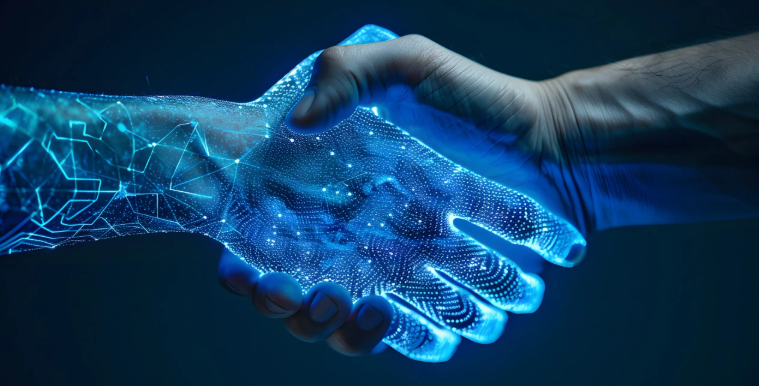

As we stand at this technological crossroads, the future of visual communication design will be defined not by the tools themselves, but by how thoughtfully designers integrate artificial intelligence with fundamental human-centered design principles. The most successful visual communicators will be those who can harness AI's computational power while maintaining the essential human insight that transforms mere information into compelling, culturally resonant communication. This synthesis of artificial intelligence and human creativity promises to unlock new possibilities for reaching audiences in increasingly sophisticated ways, ensuring that visual communication design continues to evolve as both an art and a science dedicated to making complex ideas beautifully accessible to all.
Visual Communication Design and AI
AI is revolutionizing visual communication by streamlining the creative process, enabling personalized and targeted content, and fostering new forms of visual expression. While AI offers tremendous potential, it's essential to address the ethical considerations and ensure that AI is used responsibly and creatively in visual communication. While AI presents numerous opportunities, it also raises ethical concerns that need careful consideration. AI is significantly transforming visual communication design, presenting both opportunities and challenges. Designers who can harness the power of AI tools while maintaining their human creativity, ethical considerations, and adaptability will be well-positioned to thrive in this new era of visual communication.
What emerging visual design aesthetic trends are influenced by AI?
AI is driving several distinctive aesthetic trends that are reshaping contemporary visual design language. The most prominent is the emergence of "synthetic realism"—a visual style characterized by hyper-detailed, sometimes surreal imagery that carries subtle markers of AI generation, such as slightly uncanny facial features, impossible architectural elements, or dreamlike environmental distortions that designers are now intentionally incorporating into human-created work. Generative art patterns featuring organic, flowing forms, created through machine learning algorithms, are becoming mainstream in brand identities, web design, and digital installations. These patterns are often characterized by intricate, mathematically derived designs that would be impossible to create manually. The "prompt aesthetic" is also emerging, where designers deliberately showcase the iterative, experimental nature of AI creation through mood boards, style frames, and design processes that celebrate multiple variations and unexpected combinations. Additionally, we're seeing the rise of "hybrid authenticity" in visual communication, where designers combine AI-generated elements with traditional techniques to create new forms of visual storytelling that acknowledge technological mediation while maintaining human creative intent, resulting in a distinctly contemporary aesthetic that bridges digital and analog sensibilities.
How can visual communication designers address bias in AI tools?
Visual communication designers can combat bias in AI tools through multiple strategic approaches that span technical awareness, ethical practice, and inclusive design methodology. First, designers must develop critical evaluation skills to recognize biased outputs, understanding that AI training data often reflects historical inequalities and stereotypes, particularly regarding race, gender, age, body types, and cultural representation. This requires actively diversifying input prompts, testing AI tools with varied demographic descriptors, and critically examining generated content for stereotypical representations or exclusions. Designers should establish review processes that include diverse perspectives, potentially collaborating with cultural consultants or community representatives when creating content for specific audiences. Additionally, they can advocate for better training data by choosing AI platforms that prioritize ethical development, supporting companies that invest in bias reduction, and providing feedback to AI developers about problematic outputs. Practically, designers should maintain human oversight throughout the creative process, use AI as a starting point rather than a final solution, and supplement AI-generated content with intentionally inclusive imagery and representation. Finally, transparency becomes crucial - designers should consider disclosing AI tool usage to clients and audiences while taking responsibility for the final creative decisions that shape how communities and individuals are represented in visual communications.
What are the implications of AI visual communication for user privacy?
The integration of AI in visual communication raises significant privacy concerns that fundamentally alter how personal data is collected, processed, and potentially exploited in design practices. AI-powered design tools often require extensive data input to function effectively, including user behavior analytics, demographic information, and personal preferences that can create detailed psychological and behavioral profiles extending far beyond traditional design metrics. Visual communication increasingly relies on AI systems that analyze facial recognition data, eye-tracking patterns, emotional responses, and engagement behaviors to optimize content, potentially creating surveillance infrastructure disguised as user experience enhancement. The personalization capabilities of AI visual communication mean that individual users may receive uniquely tailored content based on intimate personal data, raising questions about consent, data ownership, and the psychological manipulation potential of hyper-targeted visual messaging. Furthermore, AI-generated visual content can be used to create sophisticated deepfakes and synthetic media that blur the lines between authentic and artificial communication, potentially enabling identity theft, misinformation campaigns, or unauthorized representation of individuals. Design professionals must grapple with the ethical implications of using AI tools that may store, analyze, or redistribute client and user data across platforms, requiring new frameworks for data protection, user consent, and transparency about how AI systems influence the visual communication users encounter daily.
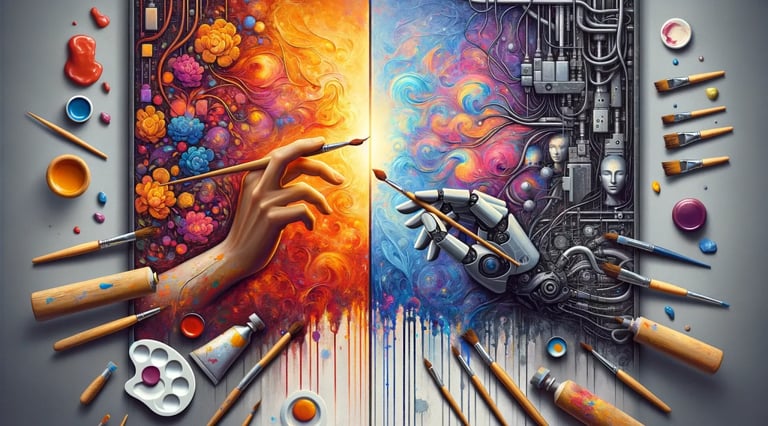

Ethical Considerations of Visual Communication Design and AI
Originality and Authorship: Questions arise about whether AI-generated designs can be considered original and who owns the intellectual property.
Job Displacement: There are concerns that AI's automation capabilities could displace human designers, particularly those focused on repetitive tasks.
Bias and Fairness: AI models trained on potentially biased data can perpetuate stereotypes or create exclusionary designs.
Quality Control: AI can generate numerous design variations, but not all of them will necessarily be high-quality or aligned with the project's goals.
Authenticity and Trust: The potential for AI to create misleading or false representations, such as deepfakes, raises concerns about the credibility of visual media.
Dependence on Technology: Over-reliance on AI tools could lead to a decrease in human designers' core skills and creativity.
The ethical landscape surrounding artificial intelligence encompasses a complex web of moral, social, and philosophical challenges that demand careful consideration as AI systems become increasingly integrated into human society. Central to these concerns is the issue of algorithmic bias, where AI systems perpetuate or amplify existing societal inequalities through biased training data or flawed design processes, leading to discriminatory outcomes in critical areas like hiring, lending, criminal justice, and healthcare. Privacy and surveillance concerns arise as AI systems often require vast amounts of personal data to function effectively, creating potential for unprecedented monitoring and control of individual behavior while raising questions about consent, data ownership, and the right to digital anonymity. The displacement of human labor through automation presents significant socioeconomic challenges, potentially exacerbating inequality while requiring society to reimagine work, education, and social support systems. Transparency and accountability remain problematic as many AI systems operate as "black boxes" whose decision-making processes are opaque even to their creators, making it difficult to assign responsibility when AI systems cause harm or make errors. Additionally, the concentration of AI development within a small number of powerful corporations and nations raises concerns about democratic governance, global equity, and the potential for AI to be weaponized or used for authoritarian control. As AI systems become more autonomous and sophisticated, questions about machine consciousness, rights, and moral agency challenge fundamental assumptions about the nature of intelligence, responsibility, and what it means to be human, requiring new ethical frameworks that can guide the development and deployment of AI technologies in ways that serve human flourishing rather than undermining it.
The rapid advancement and widespread deployment of artificial intelligence technologies have generated profound ethical dilemmas that challenge traditional frameworks for moral decision-making, requiring society to grapple with fundamental questions about autonomy, privacy, fairness, and human dignity in an increasingly automated world. AI systems often operate as "black boxes" with decision-making processes that are opaque even to their creators, making it difficult to understand how they arrive at conclusions that can significantly impact people's lives through loan approvals, hiring decisions, medical diagnoses, or criminal justice assessments. This lack of transparency raises critical concerns about accountability and the right to explanation, particularly when AI systems make errors or perpetuate discriminatory outcomes that disproportionately affect vulnerable populations. Additionally, the collection and use of vast amounts of personal data to train and operate AI systems creates unprecedented privacy challenges, as individuals may unknowingly surrender intimate details about their behaviors, preferences, and relationships that can be used to manipulate, discriminate against, or control them in ways that undermine personal autonomy and democratic participation. The concentration of AI capabilities within a small number of powerful corporations and nations further exacerbates concerns about technological sovereignty, economic inequality, and the potential for AI to be weaponized or used as a tool of surveillance and social control.
Addressing these ethical challenges requires the development of comprehensive governance frameworks that balance innovation with protection of human rights, encompassing everything from algorithmic auditing and bias testing to data protection regulations and international cooperation on AI safety standards. Organizations developing and deploying AI systems must prioritize ethical design principles from the outset, implementing practices such as diverse team composition, stakeholder engagement, impact assessments, and ongoing monitoring to identify and mitigate potential harms before they manifest at scale. This includes establishing clear guidelines for consent and data use, ensuring that AI systems are designed to augment rather than replace human judgment in critical decisions, and maintaining human oversight mechanisms that allow for meaningful intervention when automated systems produce problematic outcomes. AI is significantly transforming visual communication design, presenting both opportunities and challenges. Designers who can harness the power of AI tools while maintaining their human creativity, ethical considerations, and adaptability will be well-positioned to thrive in this new era of visual communication.
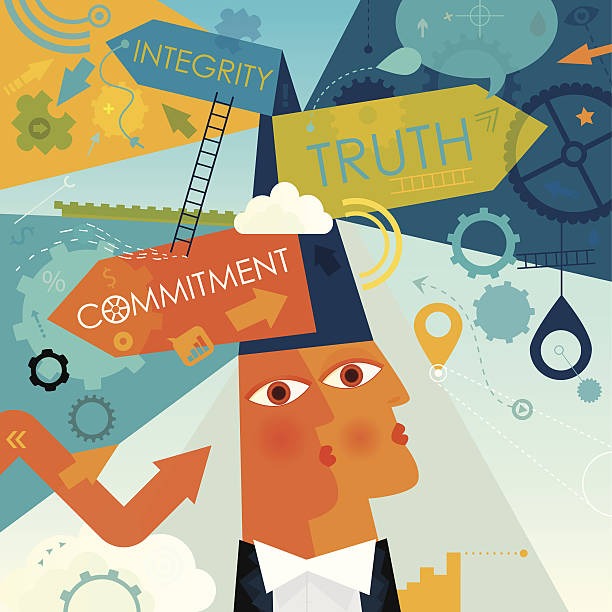

The Future of Visual Communication Design and AI
AI is likely to augment, rather than replace, human designers, allowing them to focus on high-level creativity and strategy.
Designers will need to adapt and embrace AI tools, developing skills like AI prompt engineering and AI-assisted design.
Collaboration between humans and AI will define the future of graphic design, with AI serving as a valuable assistant.
There will be a rise in personalized and adaptive designs tailored to individual users or contexts.
AI will contribute to sustainable design practices by optimizing resource usage and promoting eco-friendly solutions.
AI will play a role in creating more accessible and inclusive visual communication through features like automated alt text generation and color palette optimization.
Continuous learning and adaptation will be crucial for designers to stay competitive in this evolving landscape.
Ethical guidelines and regulations regarding AI in design are still evolving and will be crucial for maintaining trust and protecting creativity.
AI Tools for Visual Communication Design
The Future of Visual Communication Design and AI
AI is likely to augment, rather than replace, human designers, allowing them to focus on high-level creativity and strategy.
Designers will need to adapt and embrace AI tools, developing skills like AI prompt engineering and AI-assisted design.
Collaboration between humans and AI will define the future of graphic design, with AI serving as a valuable assistant.
There will be a rise in personalized and adaptive designs tailored to individual users or contexts.
AI will contribute to sustainable design practices by optimizing resource usage and promoting eco-friendly solutions.
AI will play a role in creating more accessible and inclusive visual communication through features like automated alt text generation and color palette optimization.
Continuous learning and adaptation will be crucial for designers to stay competitive in this evolving landscape.
Ethical guidelines and regulations regarding AI in design are still evolving and will be crucial for maintaining trust and protecting creativity.
AI is significantly transforming visual communication design, presenting both opportunities and challenges. Designers who can harness the power of AI tools while maintaining their human creativity, ethical considerations, and adaptability will be well-positioned to thrive in this new era of visual communication.
AI tools for visual communication design represent a transformative shift in how designers conceptualize, create, and iterate on visual content, fundamentally altering the creative process while expanding the boundaries of what's possible in graphic design, branding, and multimedia communication. These sophisticated technologies leverage machine learning algorithms, computer vision, and natural language processing to assist designers in generating layouts, selecting color palettes, creating original imagery, optimizing typography, and even producing entire design systems based on simple text prompts or visual references. From AI-powered logo generators and automated layout systems to intelligent image enhancement tools and predictive design platforms, these technologies are democratizing access to professional-quality design capabilities while simultaneously augmenting the skills of experienced designers with rapid prototyping, endless variation generation, and data-driven design optimization. However, the integration of AI into visual communication design also raises important questions about creative authenticity, intellectual property, the future role of human designers, and the potential for algorithmic bias to influence aesthetic choices and visual representation. As these tools continue to evolve, they're not merely replacing traditional design processes but creating entirely new workflows that blend human creativity with machine efficiency, enabling designers to focus more on strategic thinking, conceptual development, and client collaboration while leveraging AI for time-intensive tasks like asset creation, format adaptation, and design system maintenance. Understanding both the capabilities and limitations of AI design tools is crucial for contemporary visual communicators who must navigate this rapidly changing landscape while maintaining their creative vision and professional relevance in an increasingly automated design ecosystem.
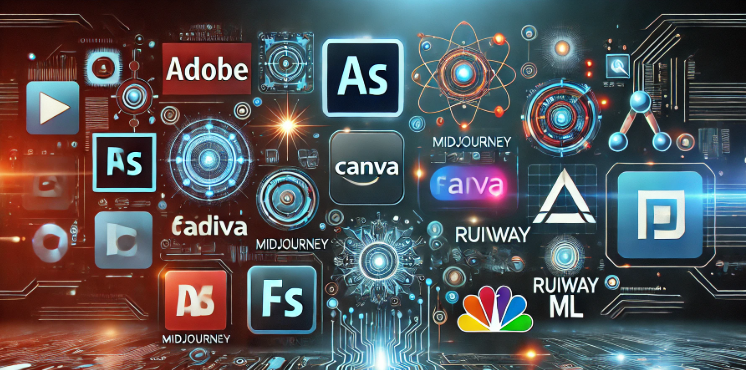

Mitigating Bias in AI Tools
Mitigating bias in AI design tools requires a multi-pronged approach across the entire AI development lifecycle, from data collection and model training to deployment and continuous monitoring. This comprehensive strategy begins with establishing diverse and representative datasets that accurately reflect the populations and use cases the AI system will serve, while implementing rigorous data auditing processes to identify and address historical biases embedded in training materials. During the model development phase, teams must employ bias detection algorithms, fairness metrics, and adversarial testing to evaluate performance across different demographic groups and edge cases, ensuring that design recommendations don't inadvertently favor certain user types or perpetuate exclusionary practices.
Bias can creep into AI systems from various sources, and recognizing them is the first step toward mitigation.
Data bias: AI models are trained on datasets, and if these datasets reflect historical or systemic biases, the AI will learn and amplify them. For example, a recruitment AI trained on historical hiring data may be biased against female candidates if the company has a history of hiring more men.
Algorithmic design bias: Unconscious or subjective choices made by developers during the algorithm's design can introduce bias. Examples include how features are weighted or how the algorithm is optimized, which can lead to discriminatory results.
Interaction bias: Bias can emerge when users interact with the AI system. Feedback loops can reinforce biased outcomes—for example, if a predictive policing algorithm directs more surveillance to certain neighborhoods, it may generate more crime data from those areas, reinforcing the algorithm's initial, biased assumption.
Lack of diversity in development teams: Homogeneous teams may miss potential biases that are overlooked due to a lack of diverse perspectives and experiences.
The development process should also prioritize inclusive team composition, bringing together professionals from varied backgrounds, disciplines, and lived experiences who can identify potential blind spots and challenge assumptions throughout the design process. Post-deployment, continuous monitoring systems must track the AI tool's outputs for bias drift and unintended consequences in real-world applications. At the same time, feedback mechanisms allow users to report problematic recommendations or outputs. Additionally, establishing clear governance frameworks, ethical guidelines, and accountability measures ensures that bias mitigation remains a priority throughout the tool's operational lifetime, with regular audits and updates to address emerging fairness concerns as societal understanding of bias evolves and new use cases emerge.
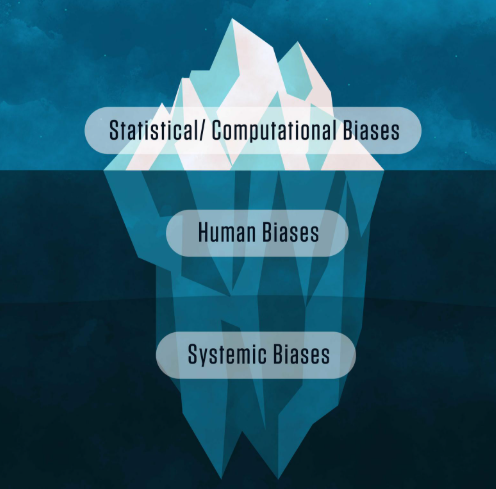

Emerging Visual Design Trends Influenced by AI
What emerging visual design aesthetic trends are influenced by AI?
AI has catalyzed several distinctive aesthetic movements that reflect both the capabilities and characteristics of machine learning systems. Generative art and procedural design patterns have become increasingly popular, featuring organic, flowing forms and intricate geometric patterns that showcase AI's ability to create complex variations from simple parameters. The "AI aesthetic" itself has emerged as a recognizable style, characterized by dreamlike surrealism, unexpected juxtapositions, and slightly imperfect details that reveal the machine learning process behind the creation. Hyper-personalized design trends are also gaining momentum, where AI enables mass customization of visual elements based on individual user data, creating unique visual experiences that adapt in real-time to user preferences and behaviors. Additionally, AI has influenced a trend toward more experimental typography and dynamic layouts that shift and evolve based on content and context, moving away from static design principles toward fluid, responsive visual systems that can optimize themselves for different audiences and platforms.
How can visual communication designers address bias in AI tools?
Addressing bias in AI tools requires a proactive, multi-layered approach that begins with understanding the training data and algorithms behind the tools designers use. Designers should actively diversify their creative inputs by consciously including diverse imagery, cultural references, and representation in their prompts and design briefs, helping to counteract homogeneous training datasets that may perpetuate stereotypes. Regular auditing of AI-generated content is essential, with designers critically examining outputs for problematic representations, cultural insensitivities, or exclusionary messaging that may not be immediately apparent. Collaboration with diverse teams and stakeholders can provide valuable perspectives for identifying blind spots and potential bias issues that individual designers might miss. Additionally, designers should advocate for transparency from AI tool developers, requesting information about training datasets and bias mitigation measures, while also staying informed about emerging best practices and ethical guidelines in AI-assisted design. When possible, designers should also supplement AI tools with manual adjustments and human oversight to ensure final outputs align with inclusive design principles and accurately represent diverse communities.
What are the implications of AI visual communication for user privacy?
AI-powered visual communication raises significant privacy concerns as these systems often require extensive personal data collection to deliver personalized visual experiences and targeted content. The creation of personalized visual content relies on analyzing user behavior patterns, demographic information, browsing history, and even biometric data like eye tracking or facial recognition, which creates comprehensive user profiles that could be vulnerable to data breaches or misuse. Real-time personalization technologies may continuously monitor and analyze user interactions with visual content, potentially creating invasive surveillance systems that track emotional responses, attention patterns, and subconscious preferences without explicit user awareness or consent. There are also concerns about the potential for AI visual systems to manipulate user behavior through precisely targeted visual triggers designed to influence purchasing decisions, political opinions, or social behaviors based on psychological profiles derived from personal data. To address these implications, designers and organizations must implement robust data protection measures, provide transparent disclosure about data collection practices, offer meaningful opt-out options for users, and ensure that personalized visual communication serves user interests rather than exploiting personal information for purely commercial or manipulative purposes.
AI is acting as a powerful assistant to designers, not replacing their creativity, but augmenting and enhancing it. By handling repetitive tasks, providing design suggestions, and enabling new creative possibilities, AI is pushing the boundaries of visual design and leading to the emergence of innovative and diverse aesthetic trends.


AI Tools for Visual Communication Design
AI Tools for Visual Communication Design have revolutionized the creative process by offering designers powerful capabilities that enhance both efficiency and creative possibilities. Tools like Adobe Firefly, Midjourney, and Canva's AI features enable rapid prototyping, automated layout suggestions, and intelligent color palette generation that can significantly reduce production time while maintaining high design standards. AI-powered platforms can analyze brand guidelines and automatically generate consistent visual assets across multiple formats, from social media graphics to print materials, ensuring brand coherence at scale. Additionally, AI tools excel at data visualization, transforming complex datasets into compelling infographics and interactive charts that make information more accessible to diverse audiences. These technologies also offer personalization capabilities, allowing designers to create multiple variations of visual content tailored to specific audience segments, demographic preferences, or cultural contexts, ultimately enabling more targeted and effective visual communication strategies.
While AI presents numerous opportunities, it also raises ethical concerns that need careful consideration in the visual communication design industry. Issues of intellectual property and copyright infringement arise when AI systems are trained on existing creative works without explicit permission, potentially leading to legal challenges and questions about fair compensation for original creators. The risk of homogenization in design aesthetics is another significant concern, as AI tools may inadvertently promote similar visual styles and reduce the diversity of creative expression that makes visual communication vibrant and culturally rich. Additionally, there are concerns about job displacement within the creative industry, as automated design processes could potentially replace certain design roles, though this also creates opportunities for designers to focus on higher-level strategic and conceptual work. Bias in AI algorithms can also perpetuate stereotypes or exclude certain demographics from visual representations, making it crucial for designers to actively monitor and correct for these issues to ensure inclusive and equitable visual communication.
The future of visual communication design and AI promises a collaborative landscape where human creativity and artificial intelligence work together to push the boundaries of what's possible in visual storytelling and brand communication. Emerging technologies like real-time personalization engines will enable dynamic visual content that adapts instantly to individual viewer preferences, cultural contexts, and environmental conditions, creating more engaging and relevant experiences. Advanced AI will likely evolve to understand complex emotional nuances and cultural subtleties, assisting designers in creating more empathetic and culturally sensitive visual communications that resonate across diverse global audiences. The integration of AI with augmented and virtual reality platforms will open new frontiers for immersive visual experiences, allowing brands to create three-dimensional narratives and interactive environments that blur the lines between digital and physical communication. However, the most successful future applications will likely emphasize AI as an enhancement tool that amplifies human creativity rather than replacing it, enabling designers to focus on strategic thinking, emotional intelligence, and innovative problem-solving while AI handles routine tasks and provides data-driven insights to inform creative decisions.
Creative Art Form and Strategic Practice
Visual communication design represents a sophisticated discipline that operates simultaneously as a creative art form and strategic business practice, requiring practitioners to master both aesthetic sensibilities and analytical thinking to create meaningful connections between organizations and their audiences through carefully orchestrated visual experiences. At its core, this field relies on the strategic manipulation of fundamental visual elements—typography, color, imagery, composition, space, and form—that work synergistically to create unified messages capable of transcending language barriers and cultural differences while speaking directly to human psychology and emotion. The discipline encompasses an expansive range of specializations, from traditional print design and branding to cutting-edge digital interfaces, motion graphics, augmented reality experiences, and AI-assisted creative tools, each requiring unique technical skills while drawing upon shared principles of visual hierarchy, cultural semiotics, and human perception. The psychological foundation of visual communication rests on understanding how the human brain processes visual information approximately 60,000 times faster than text, leveraging evolutionary mechanisms of pattern recognition, emotional association, and subconscious decision-making that bypass rational analysis to create immediate impact and lasting impression. Visual communication designers function as "visual translators," converting complex ideas, abstract concepts, and strategic business objectives into accessible, engaging visual languages that can be understood across diverse audiences, cultures, and contexts while maintaining authenticity and emotional resonance. The practice aims to achieve three critical outcomes: creating powerful first impressions that capture attention and establish credibility within seconds of initial contact; building familiarity through consistent visual systems that reinforce brand recognition and trust over time; and motivating specific actions through persuasive design elements that guide user behavior toward desired goals such as purchases, sign-ups, or engagement. These principles find application across virtually every industry and human endeavor, from healthcare communications that can save lives through clear medication instructions and emergency protocols, to educational materials that make complex subjects accessible to diverse learners, to social justice campaigns that raise awareness and drive policy change through compelling visual storytelling. Ultimately, visual communication design serves as a fundamental force in human understanding and social progress, breaking down barriers of literacy, language, and cultural difference to facilitate the exchange of ideas, emotions, and information that connects communities, drives innovation, and shapes the way we experience and interpret the world around us.
Visual Communication Services
Explore our services that blend creativity and strategy to enhance your visual communication impact.






AI for Beginners
Get expert advice on visual strategies tailored to elevate your brand and engage your audience.
Brand Identity
Craft a unique visual identity that resonates with your audience and reflects your brand values.
Transform your ideas into compelling visuals that capture attention and drive engagement effectively.
Compelling Visuals
Blending creativity and strategy to enhance visual communication design!